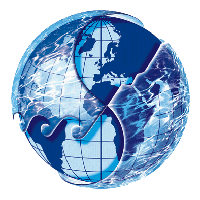


SEVENTH FRAMEWORK PROGRAMME OF THE EUROPEAN COMMUNITIES * RESEARCH EXECUTIVE AGENCY * SP3-People * Support for training and career development of researchers (MarieCurie) * Intra-European Fellowships (IEF) * FP7-PEOPLE-IEF-2008 * Grant Agreement Number 235791 * EFH-GIS * PIEF-GA-2009-235791
(Jan. 01, 2010 - Dec. 31, 2011): EFH-GIS: The identification and mapping of Essential Fish Habitats using Geographic Information Systems (total budget: 0.15 million ECU)
Introduction:
Effectively managed fisheries are more likely to be sustainable and to combine a healthy biodiverse marine ecosystem with an economically viable and competitive fisheries industry. Such fisheries management goals cannot be achieved if, for instance, the managed fish species do not have access to sufficient suitable habitat throughout their life cycle. High-quality habitat is, indeed, a fundamental requirement for reproduction, growth, migration and persistence of fish populations. The identification and spatiotemporal mapping of Essential Fish Habitats (EFHs) represent two fundamental scientific tasks of the spatial component of fisheries management, a component that has often been neglected in previously enforced fisheries policies. The 2002 reform of the European Commissionís (EC) Common Fisheries Policy (CFP) is based on an ecosystem approach to fisheries management and requires, inter alias, the introduction of essential habitat identification and protection into developing new fishery policies. This would contribute to preserving resources in the long-term, as well as the viability of the fisheries sector, particularly in the Mediterranean Sea where fisheries account for almost half the total European Union (EU) fleet.
Research Objectives: (RO)
GIS database update: An existing GIS database (maintained at the HCMR) of abiotic (e.g. temperature, chlorophyll, bathymetry) and biotic (e.g. fisheries production for commercially important species, scientific surveys) data will be updated and enriched, using existing and recently made available datasets that are not yet integrated in the database, as well as newly collected survey data.
Map ocean processes: Using the up-to-date information stored in the HCMR GIS database, the spatiotemporal distributions of productive oceanic processes (e.g. upwelling, fronts, and eddies) will be mapped, as these are known to affect species distributions and create favourable habitats for the various stages of species life cycles.
Habitat modelling: Species-environment interactions will be identified by comparing oceanic processes (RO-2) with fisheries production data. Then, species life history information will be used, along with data such as bottom substrate type and satellite imagery, in order to identify species-preferred areas for spawning/nursing, and feeding aggregations.
MPA designation: The results of ROs-2 and 3 will be used as inputs in a pilot study aimed at developing and mapping a series of scenarios for a network of MPAs, i.e. sanctuaries to protect EFHs. This objective represents a Marine Spatial Planning (MSP) approach to species habitat preservation, i.e. a spatially-explicit fisheries resources management.
Knowledge dissemination: Knowledge dissemination will be an integral part of the research work carried out in this project. The project research results will be disseminated to the EC, the scientific community and a variety of stakeholders (e.g. fisheries managers, conservation bodies), and to the wider public, through various appropriate media.


